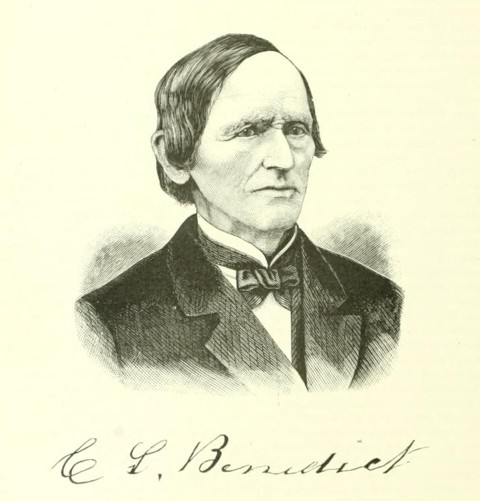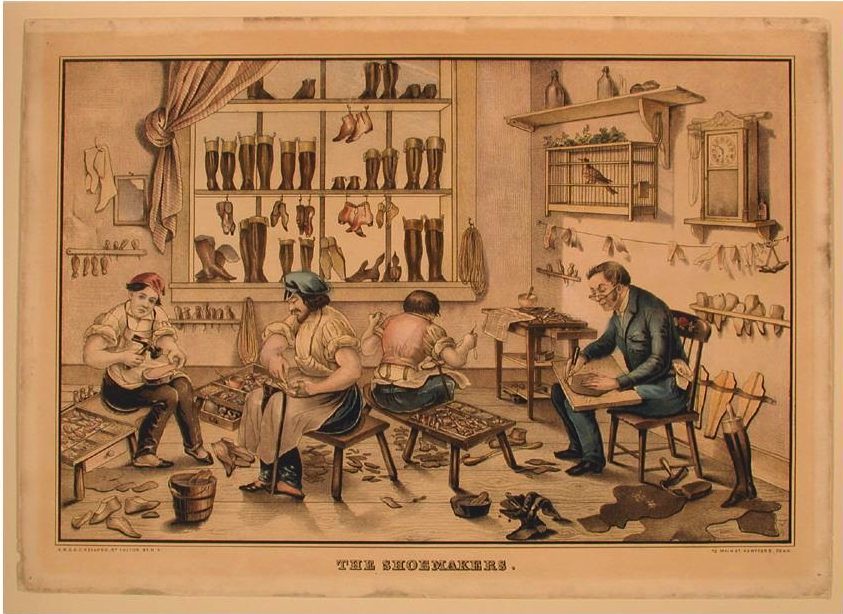New Canaan, now largely a residential suburb of New York City, was once a leading producer of US footwear. Available in a wide range of qualities and styles, New Canaan shoes made their way into the grueling cotton fields of the South and the fashionable boutiques of major metropolitan areas. Few enterprises of this era can claim the prestige afforded to the one started by James Benedict. Believed to be the oldest shoe business in the country (until its closing in 1924), the operation maintained by five generations of Benedicts helped make New Canaan a household name in the shoe-making industry.
The Beginnings of a Legacy
Business records indicate that James Benedict started his shoe-making business in an area of New Canaan known as Brushy Ridge sometime prior to 1762. Before Benedict came along, local residents depended on traveling shoemakers who wandered in and out of the area taking orders and delivering product. Benedict’s son Caleb (born in 1773) eventually took over the family business and built up significant trade with customers in the South by supplying rough, heavy shoes of tanned leather for work in the fields as well as high-end products that sold for as much as $100 for a dozen pairs in New Orleans boutiques.

Caleb S. Benedict from History of Fairfield County, Connecticut with Illustrations and Biographical Sketches of Its Prominent Men and Pioneers
Prior to the Civil War and the growth of machine stitching, little work actually took place in shoe factories. Local farmers often kept shoe-making benches in their homes as a way to earn extra money. Farmers came to factories to obtain the leather and other required materials and then returned home to make shoes in the evening or on days when the weather prohibited farm work. At one time, as many as 300 local residents regularly engaged in this type of employment.
19th-century Mechanizations Hamper Shoe Business
While the Civil War cut off much of the valuable trade with the South, the Benedict’s business survived by producing shoes for the Union army and marketing high-end products to stores in New York City. Their devotion to producing high quality, handmade products soon proved to be their downfall, however.
The post-war era brought about the age of machine-made footwear and the Benedict’s adherence to old-fashioned handmade shoes hampered their ability to compete with other producers. In 1893, a fourth-generation Benedict, T. W. Benedict, decided to focus strictly on retail sales and opened a store in New Canaan on the corner of Main Street and Railroad Avenue (what is Elm Street, today). His son took over the business in 1908 and managed to keep it afloat for another 16 years.
By the time the Benedict’s closed their store in 1924, the business was over 160 years old. During that time, they witnessed dramatic changes in New Canaan and the surrounding area that helped bring about the demise of their business. Perhaps most important among these changes were increased mechanization within the shoe industry and a growing transportation infrastructure. The latter allowed residents to commute to New York City to shop and work, patterns that helped transform New Canaan into a popular residential suburb.








